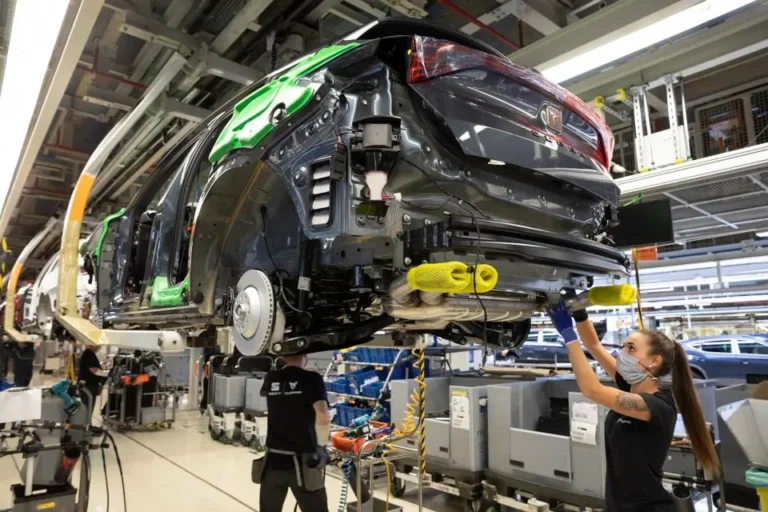Dean DeBiase is a best-selling author and Forbes Contributor reporting on how global leaders and CEOs are rebooting everything from growth, innovation, and technology to talent, culture, competitiveness, and governance across industries and societies.

How To Destroy The Spirit And Competitiveness Of A Company With AI

By Dean DeBiase
July 15th, 2024
Beginning mid-pandemic, the adoption and proliferation of employee monitoring software has accelerated in lock-step with the increase of hybrid and remote work. For employers, this makes logical sense—companies want to ensure their workforces are meeting expectations when they’re out of sight.
For employees, on the other hand, reception to the technology has been mixed—some workers believe activity tracking sows distrust while others concede it’s a worthwhile trade-off for a more flexible work schedule. Where this quid-pro-quo begins to break down is the fact that employees continue to be monitored even in the office, part or full time. What effect does tracking have on data security, privacy, and company culture? A lot.
Employee trust and company culture go hand in hand. I recently sat down with Sridhar Vembu, the CEO and Co-Founder of Zoho, a 27-year veteran SaaS and technology provider that has, as Vembu puts it, “the lowest churn in the industry.” He defines Zoho’s culture as one built on humility and contentment, two qualities competitors can no longer afford post-IPO. Zoho doesn’t watch its employees or track potential customers, using no cookies on any of its digital properties.
Last month, I attended the company’s Analyst/Media Day and annual user conference, Zoholics, where Vembu described Zoho’s workforce as “unusual people who stay with the company long term, so they can serve its customers long term.” It’s in this keynote where Vembu gets at why respecting and trusting employees is not just an act of altruism from business leaders; it has a bottom-line benefit.
Vembu goes on to say: “The modern principle of ‘that which can’t be measured, can’t be managed’ is fundamentally bad. Metrics are good for widgets. But this idea that you can apply endless metrics to improve human beings is what destroys the spirit—the spirit of organizations, the spirit of teams. If we keep our employees happy, they’ll keep customers happy. If you want to prevent customer attrition, you have to first address employee attrition.”
To be clear, Zoho does not take a laissez-faire approach to data privacy and security, either internally or for its customers through the products it creates. They have a data security and privacy stack, which includes multi-factor authentication tools, password security, and even a privacy-first browser. These tools provide businesses tighter security of their data, as well as the data of their employees and customers, just not at the expense of privacy. Drawing a line in the sand between company security and worker privacy seems to have engendered trust within the organization and strengthened its overall culture and values.
Employee Monitoring Has Nothing to do with Data Privacy or Security
It concerns me, and a growing number of CEOs and boards, that some vendors are marketing remote worker tracking software as a rose by every other name. In a blog post titled, 5 Top Cybersecurity Challenges (and How Employee Monitoring Software Address Them), one monitoring solutions provider rightly points out that businesses are and should be concerned about the privacy and security of their data. Nowhere in the nearly 1,500 word post, however, does the author explain how monitoring software in any way addresses cybersecurity threats.
Without question, businesses today need to be more vigilant in protecting the data of their ecosystems of customers, partners, and employees. The problem is that employee monitoring software doesn’t help, and in many cases, it can increase a business’ vulnerability to an attack. What’s worse is that employees, remote, hybrid, or in-office, don’t like being tracked, are suspicious of the corollary between tracking and security, and have begun to lose trust in their employers. I believe trust differentiates companies—and the lack of it can dilute company culture and sense of purpose their people may have.
Leaders Rebooting After Hard Return To Office Lessons
This puts executives in a difficult position, of course. Two statistics jump out in this Forbes article: First, the fact that “60% of companies use monitoring software to track remote employees,” and second, “73% of executives believe remote workers pose a greater security risk.” These statistics together indicate a problematic corollary between monitoring software adoption and business security fears and needs.
In considering how to mitigate security risks, some companies are performing rudimentary calculus: remote work is insecure, therefore in-office work must be very secure, right? Well, unfortunately, the employees themselves are having none of it and have pushed back on companies’ efforts to lure or flat-out demand them back in the office.
Employee Tracking And RTO Revolts
This year, 5000 employees sent SAP (SAP) management a rebellion letter stating they felt “betrayed” about the company’s RTO policies. But few have blown up more spectacularly than Dell (DELL). In May, when office attendance remained low despite a three-day-a-week mandate, the company began relying on tracking methods to determine who was following protocol and who needed to be issued literal red flags. “…some employees feel they are being ‘tracked like kindergarteners and scared that their names might end up on some list,'” wrote Business Insider at the time. Then, when that initiative flopped, Dell escalated its tactics in June 2024 by telling remote employees they were no longer eligible for promotions. Half of its US employees and one-third of its international ones decided it was still worth working from home and called the company’s bluff. A red-flag culture buster indeed.
I wonder what would have transpired if the choice were tweaked a bit: return to the office and receive promotional consideration or stay at home and subject yourself to aggressive activity monitoring. Part of me suspects nothing would be different, but I chalk that up to the fact that the industry hasn’t seen anything quite Orwellian just yet—though the tools are being put into place—and likely to intensify with deeper AI.
Insight’s 2023 Employee Monitoring Software Market Report states that “Organizations are driven to implement these tools primarily for operational efficiency (40%), data security (30%), and regulatory compliance (25%).” It should be noted that Insight is a monitoring software vendor, but the breakdown speaks for itself.
For its part in data security, monitoring software can and does alert administrators of any employee impropriety quickly. If that impropriety relates to a phishing attack wherein an employee has already allowed remote access of their device to a bad actor, quickly is not quick enough. Rather than preventing any potential security or privacy threat, these tools identify, retroactively, the source of the vulnerability.
Sorting out Compliance And Governance Issues
Governance leaders should take note that innocently or deceptively, by implementing these solutions, businesses are infringing on employees’ privacy, in the name of heightened security, for the true purpose of increasing productivity through surveillance. Compliance, which Insight lists as a top driver of monitoring software adoption, becomes harder, and more laborious to maintain the more employee behavioral data that’s stored and managed on company servers.
This is especially true for vendors using third-party technology to optimize their products because it exposes private information to outside servers. One vendor, for example, describes its solution as, “Insider Risk Management & User Activity Monitoring, Powered by Gen AI.” The more data a company gathers on its employees and third-party tools it entrusts to that, including generative AI, the more damaging breaches and attacks become. The Improper storage and unauthorized usage of company data is how a business falls out of compliance, and monitoring software increases the likelihood of that happening.
The efficacy and propriety of monitoring employee keystrokes and URL history and on-task attendance is hotly debated and a question for another day. Right now, it’s important to reiterate that monitoring software is not a legitimate solution to data security or privacy. Believing it to be or misrepresenting it as such to workers has the ability to damage a company’s culture and trust it’s earned with employees and potentially in the market. And in today’s hyper-competitive global markets, where CEOs struggle to establish and maintain a unique cultural and purpose, employee trust is needed now more than ever to remain competitive.






